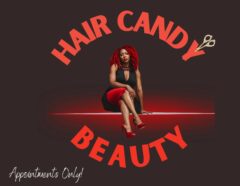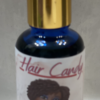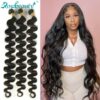So you’re thinking about starting dreadlocks? That’s an exciting step! Dreadlocks aren’t just a hairstyle; they’re a statement, a piece of history, and for many, a deeply personal journey. Now, dreadlocks have been around for centuries and are worn by people across the globe, across different cultures and backgrounds.
There’s a bit of a myth out there that dreads are all about neglect. That’s not the case. Proper dreadlock care is essential and reflects your respect not only for yourself but also for this time-honored hairstyle. Even though they might look carefree, dreadlocks require dedication and the right know-how to start and maintain them properly.
You might have heard a few other myths too, like dreadlocks are not clean or professional; well, those statements couldn’t be further from the truth. With the right care and approach, dreadlocks can be as clean and as professional as any other hairstyle. It’s all about how you start them, maintain them, and carry them.
It’s crucial that we also appreciate the roots of dreadlocks, which are deeply entwined with identity and culture. Understanding this history can guide us in making informed and respectful choices when it comes to starting and styling our locs. Embracing dreadlocks is more than a fashion choice; it’s a commitment to understanding and celebrating their cultural significance.
I’m going to help you navigate through the world of dreadlocks, from preparation to long-term care. But before we get into the specifics of starting your locs, let’s talk about what you should do to get your hair ready for this transformation. That includes understanding your hair type and length, which we will cover in the next section.
Table of Contents
TogglePreparing Your Hair: Laying the Groundwork

Jumping into the world of dreadlocks is exciting, but hold your horses, because prepping your hair is vital. It’s like getting the ground ready before planting a garden. You want the best possible start for your locks, and that starts with health. Let’s talk about making sure your hair’s in prime condition for the transformation.
You’re going to find out that not all hair types dread the same way. Some textures lock up faster and easier, while others take a bit more time and love. So, take a good look at your hair as it is now. Is it curly, straight, wavy, coarse, or fine? This is going to affect which method you’ll use to start your dread journey.
Before you start twining and knotting, give your hair a thorough cleanse. This doesn’t just mean a regular shampoo, but a deep clean that gets rid of any residue, oils, and conditioners – a true blank slate. Some people even opt for a haircut to even out their hair and remove damaged ends.
As you’re probably guessing, it’s not just about the hair. Your scalp is the foundation of your dreadlocks, so it’s important to start taking care of it now. This could mean adjusting your washing routine or using specific products to ensure your scalp is healthy, flake-free, and ready for dreads.
At this stage, it might be a smart move to chat with a professional loctician. They can offer personalized advice based on your hair type and goals. Think of it as consulting an architect before building your dream house. Their expertise could be the difference between so-so dreadlocks and truly rocking those locks.
The Birth of Dreads: Choosing the Right Method
You’re going to find out about the most common methods for starting dreadlocks and how to decide which one is right for you. This isn’t just about selecting a technique; it’s also about understanding the long-term commitment you’re making to your hair.
Backcombing is a popular method where hair is teased towards the scalp, creating knots and tangles. This approach is highly effective for those with finer hair textures, giving immediate volume and the ‘dreaded’ look from day one.
The twist and rip method is gentler and works well with coarser hair. It involves twisting small sections of hair and then ripping them apart to encourage knotting. It might not give instant results like backcombing but is less stressful on your hair and scalp.
In my opinion, don’t discount the expertise of a professional loctician. They can provide personalized advice, help you choose the best method for your hair type and lifestyle, and ensure a strong start to your dreadlock journey.
Remember, no matter which method you choose, starting with clean, residue-free hair is crucial. Residue can inhibit locking and lead to maintenance issues down the line. Opt for a clarifying shampoo before you begin to ensure your locks have the best possible start.
Maintaining Your New Locks: Daily Dreadlock Care
Now that you’ve embarked on your dreadlock journey, you’re going to find out about nurturing and maintaining your locks. This isn’t just about keeping your dreads clean; it’s also about ensuring they stay healthy and look their best.
In my opinion, the cornerstone of effective dreadlock maintenance is a proper wash routine. You might think that keeping your hair unwashed will help your dreads form, but contrary to popular belief, clean hair locks better. Aim to wash your dreadlocks every 2-3 days using a residue-free shampoo to prevent buildup.
You’re going to need to dry your dreadlocks thoroughly after each wash. Moisture trapped inside dreads can lead to mildew or a ‘dread rot’, so it’s crucial to invest time in drying them completely. If you have thicker locks, you might consider using a microfiber towel or a blow dryer on a low heat setting.
Regular maintenance sessions, known as ‘palm-rolling’ or ‘root-rubbing’, are important for keeping those dreads tight and tidy. Choose something that resonates with you and your hair type – but as a general rule, palm-rolling after washing can help maintain the shape of your locks.
Don’t worry too much about stray hairs at the beginning; it’s a natural part of the process. Over time, these will work themselves into your dreads. However, if you want to tidy up, you can crochet loose hairs back into your dreadlocks.
I’m here to help you with your dreadlock journey, and a part of that is being prepared for some bumps along the way. That’s going to include dealing with common issues like frizz and dreadlock thinning, which we’ll cover next.
Solving Common Dreadlock Dilemmas
Now, let’s move on to unraveling a few common issues you might encounter with your dreadlocks. I’m going to walk you through some practical solutions to keep your locks looking fabulous.
First off, if you’re facing the frizz, don’t fret. It’s a natural part of the locking process. Invest in a residue-free tightening spray that adds moisture without loosening your locs. Regular palm rolling between washes can also help to tame those flyaways.
Next up, dealing with thinning or breakage. It’s critical to avoid over tightening during maintenance. That means being gentle when you re-tighten your roots. It’s also essential to ensure your hair and scalp are nourished. Incorporate essential oils like jojoba or coconut into your routine for added strength.
Keeping your scalp healthy is a big deal. An unhealthy scalp can lead to weak dreadlocks. Utilize special shampoos designed for dreadlocks that balance the scalp’s natural oils and avoid heavy waxes or gels that can cause buildup, hindering your scalp’s health.
In terms of buildup, I’m not just talking about products. Hard water can leave deposits too. If you notice a gritty texture to your dreads, consider a dreadlock detox or use a water filter for washing your hair.
Accessorizing Your Dreads: Ethical and Personalized Styling
Accessorizing your dreadlocks can be a delightful way to showcase your personality, but it’s crucial to make choices that are both ethical and resonate with your personal style. Let me walk you through some tips and tricks to ace the accessorizing game without compromising on these values.
Choose something that resonates with you
Firstly, when picking out accessories, it’s important to select items that you genuinely love and feel represent your personal aesthetic. Whether it’s beads, wraps, or even precious stones, these embellishments should reflect your uniqueness.
Respecting cultural elements
Moreover, it’s my belief that being mindful of cultural significance when choosing your accessories is key. Many adornments carry cultural histories and meanings that should be respected. Do your research to understand the origins of any accessories you’re interested in, and avoid those that may be culturally sensitive or appropriative.
DIY approach for personalization
If you want to craft a distinctive look, why not try your hand at creating your own dreadlock decorations? DIY allows you to customize to your heart’s content, ensuring that your locks are uniquely yours. Plus, it tends to be a budget-friendly option.
Again, don’t worry too much about perfection here
Adding accessories should be a fun and stress-free process. Your first attempt at decorating your locks doesn’t need to be your last, so feel free to experiment until you find the perfect setup that feels right.
Stepping into the next section, we’re going to explore how your newfound look will carry through various aspects of your life, including career and social interactions. A lot is happening very quickly in the world of fashion and personal expression, so it’s time to see how your dreadlocks will fit into the larger picture.
Dreadlocks and Lifestyle: Balancing Careers, Relationships, and Perceptions
If you’re embarking on the dreadlock journey, you’re going to find out about more than just hair. It’s a path that may challenge the way others perceive you and how you perceive yourself. Your locks aren’t just a style—they’re a statement that can affect your career and relationships.
In the workplace, you may encounter dress codes or corporate cultures that are less accepting of dreadlocks. It’s important to be prepared for these scenarios. Remember, you have the right to express yourself, and there’s a growing recognition for diversity in appearance.
When it comes to personal relationships, don’t be surprised if your dreads become a topic of conversation. Some people may have questions or carry biases about them. Use these encounters as opportunities to educate and share the deeper significance of your locks.
Ultimately, wearing dreadlocks should be an empowering choice that aligns with your identity. If at any point you feel it’s not, give yourself the freedom to evaluate and decide what’s best for you without judgment.
The Journey Ahead: Long-Term Plans for Your Dreadlocks
You’re going to find out about the importance of viewing your dreadlocks as a long-term commitment. Dreadlocks aren’t a ‘set it and forget it’ style. As with any journey, there will be changes and decisions to make along the way.
Choose something that resonates with you and your lifestyle when thinking about the long-term care for your locks. It’s about finding a routine that’s sustainable, with products that maintain the health of your hair and scalp over the years.
Don’t worry too much about needing a change in the future. If you decide to alter the length or style, or even if you opt to remove your dreadlocks altogether, remember that it’s all part of your personal evolution. A skilled loctician can guide you through these processes safely.
Just don’t focus too much on perfection. Embrace the unique journey your hair is on. Taking pride in your locks means celebrating each phase of growth and learning that comes with it.
And finally, I really hope that these tips and insights have given you confidence in starting and maintaining your dreadlocks. Whether you’re considering this style or have already begun your journey, remember that your locks are a unique expression of your individuality and spirit.









